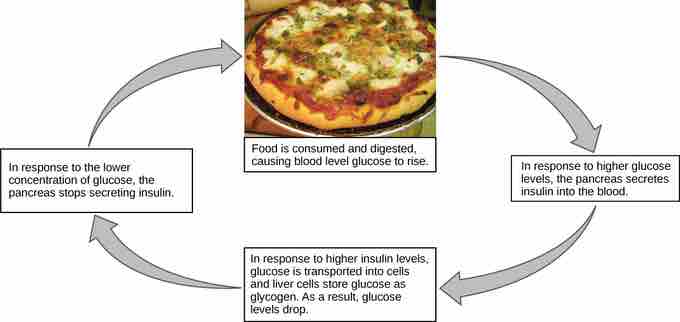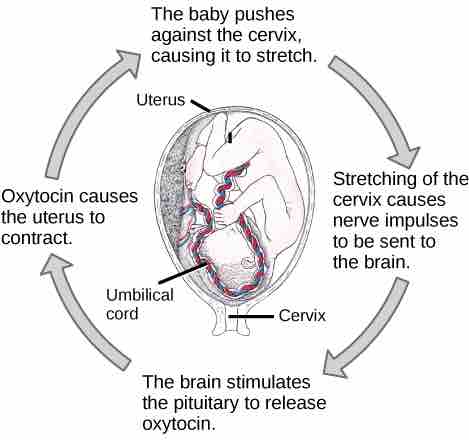Control of Homeostasis
When a change occurs in an animal's environment, an adjustment must be made. The receptors sense changes in the environment, sending a signal to the control center (in most cases, the brain), which, in turn, generates a response that is signaled to an effector. The effector is a muscle or a gland that will carry out the required response. Homeostasis is maintained by negative feedback loops within the organism. In contrast, positive feedback loops push the organism further out of homeostasis, but may be necessary for life to occur. Homeostasis is controlled by the nervous and endocrine systems in mammals.
Negative Feedback Mechanisms
Any homeostatic process that changes the direction of the stimulus is a negative feedback loop. It may either increase or decrease the stimulus, but the stimulus is not allowed to continue as it did before the receptor sensed it. In other words, if a level is too high, the body does something to bring it down; conversely, if a level is too low, the body does something to raise it; hence, the term: negative feedback. An example of negative feedback is the maintenance of blood glucose levels. When an animal has eaten, blood glucose levels rise, which is sensed by the nervous system. Specialized cells in the pancreas (part of the endocrine system) sense the increase, releasing the hormone insulin. Insulin causes blood glucose levels to decrease, as would be expected in a negative feedback system . However, if an animal has not eaten and blood glucose levels decrease, this is sensed in a different group of cells in the pancreas: the hormone glucagon is released, causing glucose levels to increase. This is still a negative feedback loop, but not in the direction expected by the use of the term "negative." Another example of an increase as a result of a feedback loop is the control of blood calcium. If calcium levels decrease, specialized cells in the parathyroid gland sense this and release parathyroid hormone (PTH), causing an increased absorption of calcium through the intestines and kidneys. The effects of PTH are to raise blood levels of calcium. Negative feedback loops are the predominant mechanism used in homeostasis.

Negatie feedback loop
Blood sugar levels are controlled by a negative feedback loop.
Positive Feedback Loop
A positive feedback loop maintains the direction of the stimulus and possibly accelerates it. There are few examples of positive feedback loops that exist in animal bodies, but one is found in the cascade of chemical reactions that result in blood clotting, or coagulation. As one clotting factor is activated, it activates the next factor in sequence until a fibrin clot is achieved. The direction is maintained, not changed, so this is positive feedback. Another example of positive feedback is uterine contractions during childbirth. The hormone oxytocin, made by the endocrine system, stimulates the contraction of the uterus. This produces pain sensed by the nervous system. Instead of lowering the oxytocin and causing the pain to subside, more oxytocin is produced until the contractions are powerful enough to produce childbirth .

Positive feedback loop
The birth of a human infant is the result of positive feedback.
Set Point
Homeostasis is performed so the body can maintain its internal set point. However, there are times when the set point must be adjusted. When this happens, the feedback loop works to maintain the new setting. An example of changes in a set point can been seen in blood pressure. Over time, the normal or set point for blood pressure can increase as a result of continued increases in blood pressure. The body no longer recognizes the elevation as abnormal; there is no attempt made to return to the lower set point. The result is the maintenance of an elevated blood pressure which can have harmful effects on the body. Medication can lower blood pressure and lower the set point in the system to a more healthy level through a process of alteration of the set point in a feedback loop.
Changes can be made in a group of body organ systems in order to maintain a set point in another system. This is called acclimatization. This occurs, for instance, when an animal migrates to a higher altitude than one to which it is accustomed. In order to adjust to the lower oxygen levels at the new altitude, the body increases the number of red blood cells circulating in the blood to ensure adequate oxygen delivery to the tissues. Another example of acclimatization is animals that have seasonal changes in their coats: a heavier coat in the winter ensures adequate heat retention, while a light coat in summer assists in keeping body temperature from rising to harmful levels.